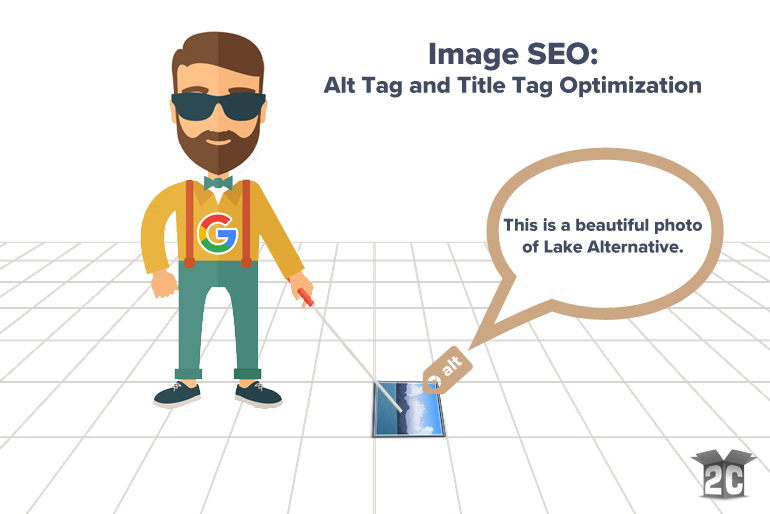
You know the old saying, “You eat with your eyes?” It is true. The same goes for your website pages. People are drawn into your articles by that perfect image that engages an emotional response. Or, sadly, they are repulsed, when you use samey-looking stock photos that bore the brain to death.
And while images, in and of themselves, do nothing to excite search engines, Google places a high value on them.
Plus, using them will improve the accessibility of your website through the use of appropriate alt attributes called alt tags and title tags. The alt and title attributes of an image are commonly referred to as alt tag or alt text and title tag even though they’re not technically tags.
In this post you will learn all about alt tags and title tags and why you should optimize those.
[bctt tweet=”You eat with your eyes? It is true. The same goes for your website pages.”]
Alt Tags
“Alt image” tags are short pieces of text that are associated with a graphic. If the graphic cannot be displayed for some reason, or if someone has set up their browser to block images, the text is shown instead. (The “alt” is short for “alternative”.)
Also, browsers designed for the blind and sight impaired read out the text content of pages, including the alt tags, which describe the image to them.
Here is what an image tag looks like in html code:
<img src="http://www.YourDomain.com/images/logo.gif" alt="Your Keyword image" width="728" height="123">
The alt tag is this part:
alt="Your Keyword image"
Since search engine robots are blind to the graphic itself, they read and index alt image tags. However, since this text is normally hidden from human visitors, it is especially susceptible to keyword spamming (i.e. entering a massive string of keywords that “hide” behind the picture). For this reason, search engines are giving less importance to alt image tags. They still are important though, and having the tags on your pages can give you a slight edge over competitor sites that don’t have the tags.
Rule of Thumb: if a keyword would be useful for finding something that is on the image, include it in the alt tag if you can.
When adding alt tags to your pages, keep the following points in mind:
- Don’t go overboard. Resist the temptation to pack in a long list of keywords because this could potentially get your site penalized by search engines.
- The main image on your page should include the primary target keyword of your site page content.
- The tag text should make sense if someone actually read it, and actually describe what is shown in the graphic. Like this:
<img src="http://www.YourDomain.com/images/logo.gif" alt="This image shows the best way to do Image SEO using Alt Tags and Title Tags." width="728" height="123"> - For eCommerce images, specifically product images, include both the full product name, product code, and brand name in the alt tag, so it can be easily found
Title Tags
While the alt attribute is for search engine crawlers, the title tag, is for human readers. It’s what’s revealed when you hover over the image without clicking.
Image title tags, not to be confused with page title tags, show up as a tooltip when you hover over user element like buttons. It is useful to add a little more detail on what the user gets if they click the button, for example.
Title text for images is similar to alt tags, and a lot of people that use these simply copy the alt text, however, for a good user experience, you can use them wisely as user instructions, or a call to action to prompt a reader to act.
Using Alt Tags and Title Tags on images is so easy with the content management systems of today, there is no excuse to leave them out.

